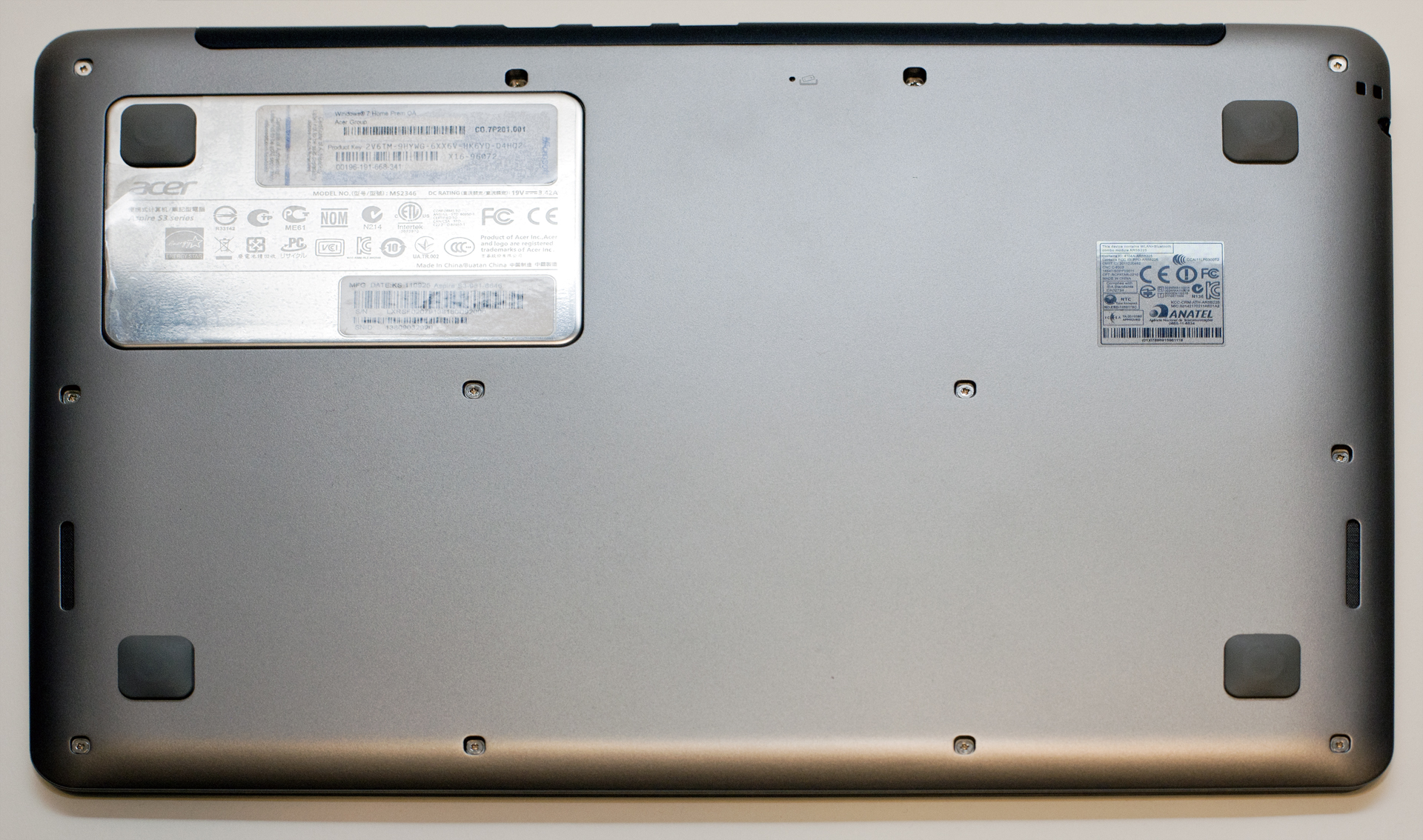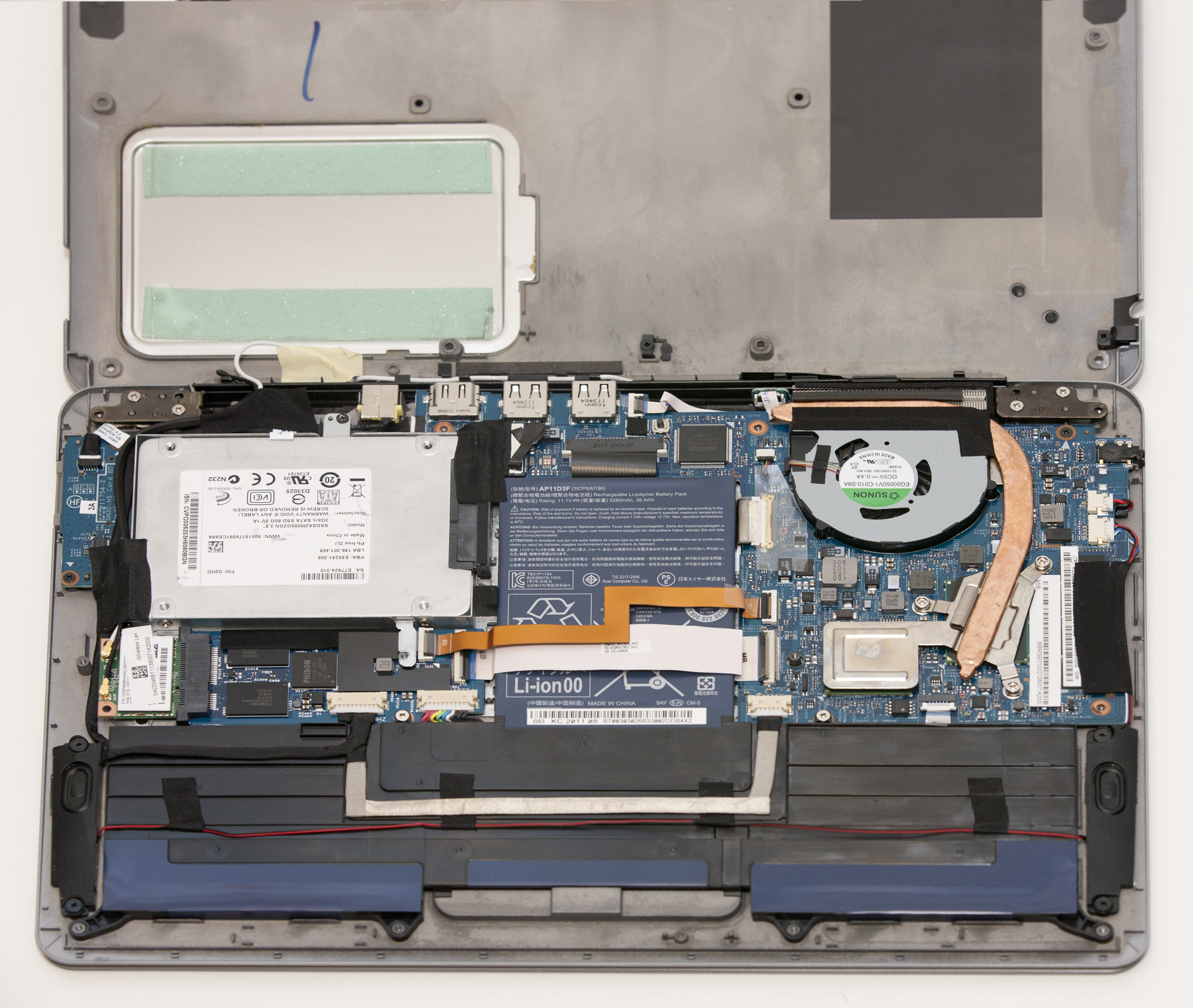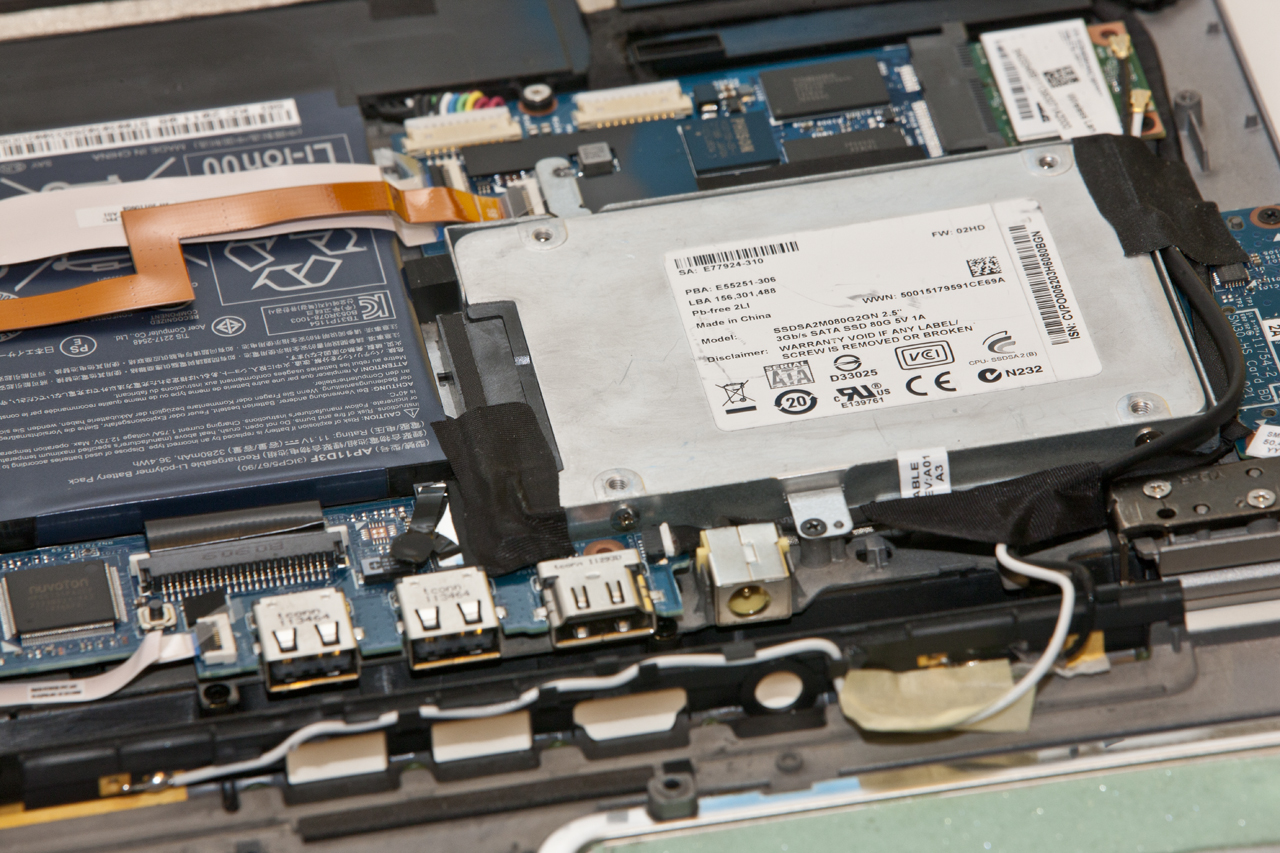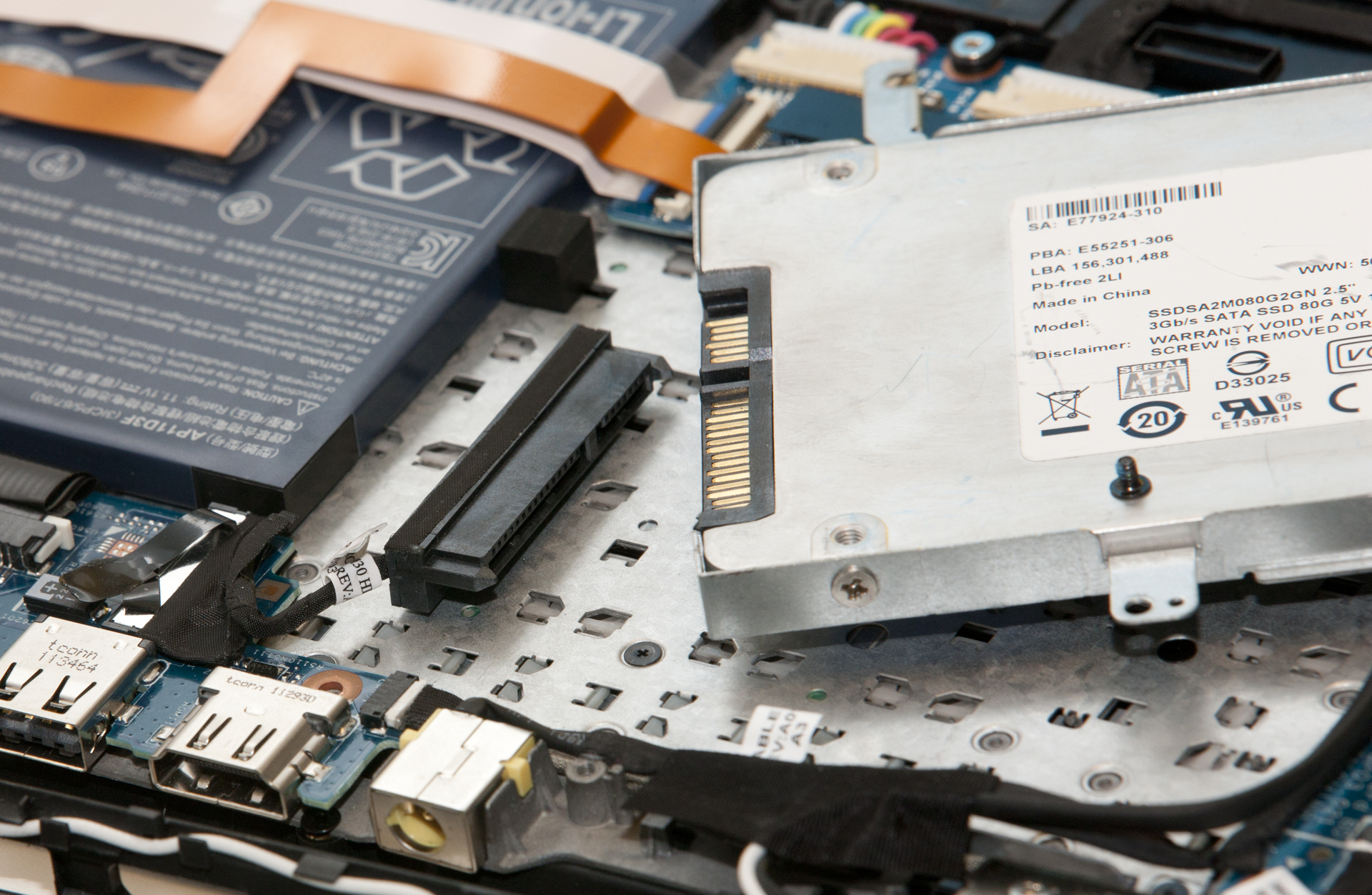Ultrabook: Behind How Intel is Remaking Mobile Computing
We recently had the opportunity to sit down with some of Intel's high-level execs responsible for the Ultrabook initiative to talk about its inception, to track its progress over a few generations, and to get an idea of where Ultrabooks are going.
Dissecting An Ultrabook
Before touching on Haswell, I thought it might be enlightening to take you on a tour of an Ultrabook’s innards. Intel had a well-worn demo unit laying around that it volunteered to let me put under the knife. I’ve worked inside of notebooks for well over a decade, but this was my first time inside of an Ultrabook, and I was curious to check out what might have changed.
The unit in question was a special-order Acer S3, complete with a microprocessor theme lid and sticker on the I key—for Intel. Get it?
Now, I’ve been toting around a $399 14” Toshiba Satellite for over two years, so the S3 was a dramatic switch for me. At 13.3”, the screen didn’t feel much smaller, but at only three pounds, the S3 was less than half the weight of my Toshiba, and it was only 0.68” thick. My unit barely predated the arrival of touchscreen functionality, but the form factor alone was enough to make me drool, and Intel assured me that the S3’s insides would be very similar to Ultrabooks hitting the market over the following year.
There are 12 Philips head screws on the bottom panel, which is about par for the notebook course. However, you may notice that there are no panels for accessing the memory or drive bays. This is a red flag for me. As a long-time DIY guy, I like being able to upgrade as needs beckon, especially knowing that most S3s only carry 5400 RPM hard drives (our custom unit has an 80 GB SSD). I can live with taking off the bottom, though...if things aren’t too tricky on the inside.
Screws out and bottom panel removed. Things look familiar, and yet significantly different. Let’s step through the dissection.
Given the diminutive components that go into most Ultrabooks, you'll find that the insides vary quite a bit from one vendor to another. But how hard was it for us to upgrade the drive in this specific model? Not bad. There are no bays, but the drive still mounts into a frame that screws down onto the platform supporting the motherboard and other components. The SATA cable hangs loose, unlike some notebooks that have the drive plug into a fixed connector. The SATA cable is secured to the drive by some black tape. More tape holds one of the Wi-Fi antenna cables to the back of the drive frame. This needs to be peeled away before the drive can be removed.
Get Tom's Hardware's best news and in-depth reviews, straight to your inbox.
Current page: Dissecting An Ultrabook
Prev Page Slimming Down: The Components Were Key Next Page Elbows-Deep In Innards, Then A Flatline-
techtalk I am just half way through the article. I am compelled to comment here. "What an Article" Amazingly well written, superb flow and great content.Reply -
outlw6669 Reply11271822 said:The battery always comes out first.
Words to live by.
RIP brave little Ultrabook. -
nibir2011 ReplyUltrabook aims to make its platform so compelling that, frankly, you’d be a fool to consider an under-performing, over-priced, feature-limited high-end tablet.
It will be only possible if Intel and AMD goes hand in hand. Mobile sector is so lucrative to OEM that eventually they will go there until there is a great product. If intel only thinks about their own business then it will be like what microsoft did to desktop. No software developers do not want to make consumer application, as app developing is business friendly.
It has to be a joint collaboration. -
nibir2011 ReplyUltrabook aims to make its platform so compelling that, frankly, you’d be a fool to consider an under-performing, over-priced, feature-limited high-end tablet.
It will be only possible if Intel and AMD goes hand in hand. Mobile sector is so lucrative to OEM that eventually they will go there until there is a great product. If intel only thinks about their own business then it will be like what microsoft did to desktop. No software developers do not want to make consumer application, as app developing is business friendly.
It has to be a joint collaboration. -
kartu Huge, fictional article on what is supposed to be a tech site.Reply
Everyone has a notebook. Most of them are more than fast enough.
Now what can a company that excels only at CPUs do about that?
It sure takes a genius to notice that people like lighter thinner thingies, right.
I'm sure Steve Jobbs (I guess that's The Genius to the article's author) absolutely had to take part in this astonishingly far sighted decision to go lighter and thiner, it is soo far sighted, nobody else could have imagined that.
People prefer thinner and lighter, cooler looking things... What a frucking surprise... -
williamvw Reply11274396 said:Huge, fictional article on what is supposed to be a tech site.
Fictional. I'm not sure that word means what you think it means.
11274396 said:Everyone has a notebook. Most of them are more than fast enough. Now what can a company that excels only at CPUs do about that?
That is an excellent question. You may wish to review pages 1 through 6 for answers. Pages 10 through 13 aren't bad, either. None of the content in them is fictitious, in case you remain unsure.
11274396 said:People prefer thinner and lighter, cooler looking things... What a frucking surprise...
Thank you for your input. Your skepticism is even more warranted than it is well-stated. Of course, just because people want things doesn't mean that those things actually exist. Or are affordable. Or can be serviced. I mean, at least that's the case in the real world. In fictional scenarios, where the Tooth Fairy delivers ultralight notebooks from the future, tiny companies can move product ecosystems with the same ability and effectiveness as large ones, and unicorns soar majestically through pink and purple treetops, I suppose anything is possible. In the real world, though, this article describes how things actually get done.
-
superduper Although a well written article, I still have reservations regarding some of the context:Reply
The battery life "ballooning" had very little to do with Ultrabooks but rather silicon that was more frugal, particularly at idle and the density of battery packs. Your average Ultrabook often sacrifices Li-Polymer battery capacity to remain thin and svelte (MBA an exception). As a result, the 35W notebook with the bigger battery will get better battery life than the 17W ULV (vast majority of computing is spent at idle).
The facial and speech recognition software seems very nifty, but it's still not something that's an Ultrabook specialty. The software is available to tablets and smartphones as well (the Moto X uses a specialized core specifically to handle the speech recognition).
I'm far more interested in what Intel is looking to offer in 2015 for the Ultrabook platform than I am about the rather weak software additions that don't differentiate it. What is Intel going to offer me in exchange for the extra $200-$300 dollars out of my pocket for an Ultrabook? What am I getting beside a thinner chassis to warrant that much cash? In some ways, to me it seems like Intel and its OEMs have become victims of their own success. The Ultrabook is there to revive some lost sales to the mobile market, but outside of a higher price tag and a dedicated keyboard, I don't see what the bonuses are. -
williamvw Reply11275162 said:Although a well written article, I still have reservations regarding some of the context:
The battery life "ballooning" had very little to do with Ultrabooks but rather silicon that was more frugal, particularly at idle and the density of battery packs. Your average Ultrabook often sacrifices Li-Polymer battery capacity to remain thin and svelte (MBA an exception). As a result, the 35W notebook with the bigger battery will get better battery life than the 17W ULV (vast majority of computing is spent at idle).
The facial and speech recognition software seems very nifty, but it's still not something that's an Ultrabook specialty. The software is available to tablets and smartphones as well (the Moto X uses a specialized core specifically to handle the speech recognition).
I'm far more interested in what Intel is looking to offer in 2015 for the Ultrabook platform than I am about the rather weak software additions that don't differentiate it. What is Intel going to offer me in exchange for the extra $200-$300 dollars out of my pocket for an Ultrabook? What am I getting beside a thinner chassis to warrant that much cash? In some ways, to me it seems like Intel and its OEMs have become victims of their own success. The Ultrabook is there to revive some lost sales to the mobile market, but outside of a higher price tag and a dedicated keyboard, I don't see what the bonuses are.
Excellent points, and I agree with all of them. You are absolutely correct about the battery issue. Intel has no influence that I know of over Li-Ion battery efficiency; it can only try to reduce the platform's drain on the battery that's there. That was the company's challenge: how to get every component to consume less power. Obviously, some have more leeway than others.
I also share your curiosity about 2015, as I indicated in the conclusion. It might be fair to say that if Centrino's mission was to cut the Ethernet cord, Ultrabook's (at least initial) mission is to cut the power cord. The thinner and lighter business just goes along for the ride.
To be totally honest, 2012 Ultrabooks were not enough to interest me. It wasn't different enough from what I already owned. But you have to start somewhere and implement change in stages. The first design that really grabbed me was the Yoga. The convertible thing works for me and my needs, and the design is superior to, say, a tablet wrapped in a keyboard case.
Your big question, of course, comes back to MIPS, and this is really a religious issue. Do we want our MIPS in the cloud or on our lap? There are good arguments both ways. Obviously, Intel's substantial PC group prefers them in our lap. My daily struggles with Google Voice tell me that this is a worthwhile thing. Now, if carriers improve and whatnot, and I'm able to get the same class of perceptual computing performance from the cloud on my phone that I can get on my lap in an Ultrabook, I think the weight of judgment must finally fall in the cloud's favor. It's more efficient on all counts. (I'm ignoring security concerns for the sake of argument.) But when I'm using my phone to compose notes or story chapters or whatever, which I do every day, then all I care about is accuracy, speed, and my total productivity. If the Ultrabook effort fosters a notebook ecosystem in which I can get better results for my needs from a two-pound convertible, then I'm all about the convertible and totally behind Ultrabook. I'm selfish that way.
In short, we may find that the Ultrabooks of 2015 don't offer you enough extra value to justify your extra $200 or $300. However, I'd wager that at least some of the benefits you will enjoy in your non-Ultrabook, mainstream laptop of 2015 would not exist at their then-current level of development without Intel having made the investments in Ultrabook I've described in this article.
And what if Google and Apple and whomever manage to saw Intel's legs off and leave the notebook paradigm in the dust? Well, that's how it goes. The market decides what has value and what doesn't. That trend has already started. The question now is whether it will continue.
-
williamvw Reply
Oh, my gosh -- ANOTHER accusation of bribery! How novel! Well, since you managed to deduce that much on your own, geeze, lemme think... How much did they offer to pay me? Oh, I remember! It was http://www.youtube.com/watch?v=-DJtHL3NV1o!!! Because that's how globe-spanning $115 billion companies get to $120 billion, by putting their reputations on the line and bribing little journalists like me to write articles about historical developments just like this one.11277068 said:How much did Intel pay you to write this ? , we all know that ultra books sales are below freezing




